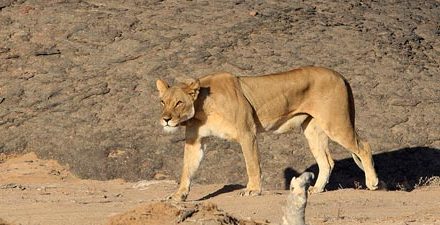
Local component of transboundary Community Conservancy Sustainable Wildlife Management project launched

The project signing ceremony to kick off the implementation of the Namibia component of the transboundary Community Conservancy Sustainable Wildlife Management (SWM) project was launched in Windhoek this week, between the government, the Food and Agriculture Organisation (FAO) and French Development Agency (AFD).
The activities in Namibia will form part of a EURO 3.5 million project financed by AFD to improve sustainable wildlife management and food security in Namibia and Botswana.
Under the Sustainable Wildlife Management Programme, the new project will partner with the governments of Namibia and Botswana to address threats from unsustainable levels of wildlife hunting, closure of habitats, and fragmentation, which prevent animals from reaching the resources they need to survive, as well as poaching of animals as a result of human-wildlife conflicts.
The project also aims to increase the resilience of the communities faced with erratic rainfall and frequent droughts.
“The focus of the project is to benefit both the wildlife and ecosystems in the Transfrontier Conservation Area and the resilience of local communities that rely on them, at least in part, for food and income,” said Farayi Zimudzi, FAO Representative in Namibia.
The project will focus on supporting the development of a network of community conservancies and community-based organizations that help manage community-owned land to ensure the conservation and sustainable use of natural resources for the benefit of local livelihoods. Namibia already has a network of 86 community conservancies, which collectively cover 20 percent of the country and are home to nearly 230,000 people.
Gilles Kleitz, Director of the AFD Ecological Transition and Natural Resources Department said this project aims to establish an effective network of community conservancies since they have proven to be a powerful means to combat rural poverty.
“In Namibia, for instance, conservancies contributed to more than USD 10 million in benefits such as income, employment remuneration, and payments in kind, for example meat, to conservancy members in 2018. The overall economic contributions from these benefits amounted to more than USD 62 million, including the creation of over 5,300 jobs from conservancy related operations and enterprises,” Gilles added.
In Namibia, the project will be implemented with the support of World Wildlife Fund (WWF) Namibia. The project sites include 12 community conservancies in the Khaudum-Ngamiland and Kwandu wildlife dispersal areas, as well as the Kyaramacan Association in Bwabwata National Park. Together, these sites will foster ecological connectivity throughout the KAZA landscape. The project will also contribute to create policies aimed at fostering the development of community conservancies, sustainable hunting, wildlife conservation and enhanced institutional and legal frameworks needed to implement these policies.
The Sustainable Wildlife Management Programme is already promoting a similar approach in Zambia and Zimbabwe.
 Pohamba Shifeta, Minister of Environment, Forestry and Tourism and FAO Representative in Namibia, Farayi Zimudzi, during the launch in Windhoek. (©FAO/MEFT)
Pohamba Shifeta, Minister of Environment, Forestry and Tourism and FAO Representative in Namibia, Farayi Zimudzi, during the launch in Windhoek. (©FAO/MEFT)











































